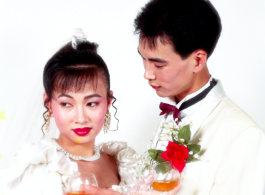Talk
Catherine David & Zheng Guogu
Thursday, June 9 – 5 pm
Galerie Chantal Crousel is pleased to present the artist’s first solo exhibition in France featuring paintings, sculptures, video, zen gardens, all created between 2007 – 2015.
One tea leaf gives birth to twenty-eight thousand buds, thus forming a concentrated ecosystem, or rather a concentrated forest. Slowly the forest gets purified over time; once all the impurities are filtered out, it turns into a source of energy. Once established, the pure energy becomes a monocrystalline world. Our body may not be able to recover by itself, but drinking tea enables us to return to a status of recovery, during the process of which tea serves as the medium.
—Zheng Guogu
Today’s seemingly too clear historical consciousness possibly comes hand in hand with the degradation of human perception. Consequently, it is difficult for us to imagine the dynamic and mysterious entanglement of chaos and order in history; paradoxically, an increasing number of contemporary biology and physics research have shown that most biological systems and many physical systems are discontinuous, heterogeneous and irregular. The complex structure and capricious behavior of life systems can be attributed to less certain rules or patterns than a willingness to submit oneself to chaos.
Such a dynamic system full of turbulence and chaotic features is perhaps what contemporary artists are faced with; its flow is characterized by spatial uncertainties. The Chinese artist Zheng Guogu’s latest works try to reveal the energy flow lurking in the process of perception. The so-called “to see” is actually the process of using the energy all over the body to perceive multiple spatial dimensions. In Zheng’s paintings, the vibration of color frequencies is closely related to the workings of human arteries and veins, as well as the operation of the universe. Furthermore, the vibration is the tempering of an existential insight.
For Zheng Guogu, painting is a two-dimensional space he has to endure, and how to access this space freely and see through the spells and illusions of this era are the key objectives of his persistent practice. The spiritual inspiration which the mahottara (a Buddhist term, meaning “great illusion”) has brought about is not only embodied in religious symbols and language carried by the traditional thangka paintings, but Zheng can transform the acquired knowledge and develop a painting process that is closely related to our era, the era challenged by the curse of falling apart and at the same time blessed with great possibilities. Enlightened by mahottara, mantra wheel as well as a series of related painting practices, Zheng Guogu can see more clearly the surrounding energy field and the energy flow and meridian system all over his own body*. We as spectators can in turn be guided through his eyes and gradually enter an ambiguous and intangible space. In this way, painting reveals a process of exploring the energy exchange of the whole body as well as the surroundings, and the exhibition space is in turn transformed into a lively place collecting energy and wisdom from a “monocrystalline world” (for instance: tea).
I’m not sure whether the dust in the air will become food for ghosts, or whether the color system carried by our human flesh can respond to the separation and reunion of cosmic energy. Anyhow Zheng’s works at least inspire our imagination of a spatial dimension difficult to perceive. Continuous flow cycles seem to exist between the artworks and our bodies as well as emotions “aroused” and “not aroused,” leading to the ups and downs of life rhythm and in turn reflecting the spectral sequence of individuals different from that of the world.
—Hu Fang
On the opening night, ancient Chinese tea and incense ceremonies will be conducted by the artist, in the dedicated tea room.



